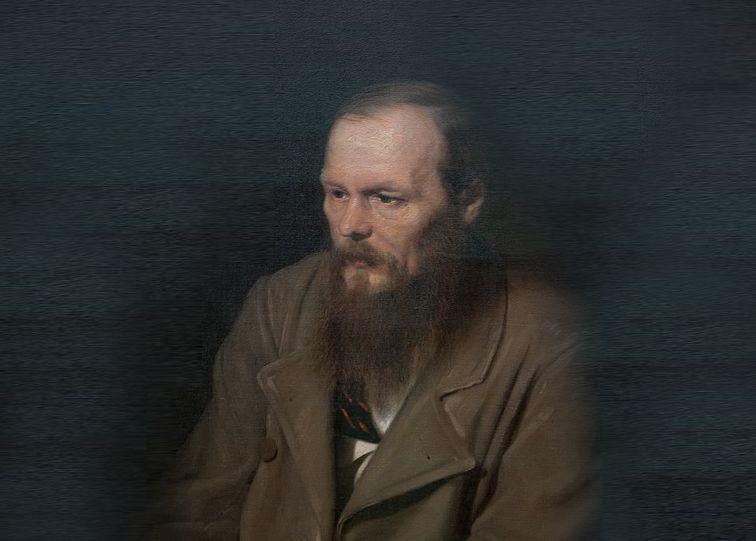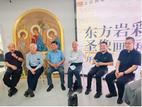The 200th anniversary of the birth of Fyodor Dostoevsky, one of the greatest writers in Russia and the world, was November 11th last year. Literary and intellectual circles in-country and abroad expressed their commemoration.
The Russian novelist Dostoevsky wrote many profound works, such as Crime and Punishment, The Idiot, Demons, The Brothers Karamazov, Notes from the House of the Dead, etc. Joseph Brodsky claimed that Dostoevsky’s works reach the deepest side that human beings have ever touched. Chinese writer Lu Xun regarded him as the great interrogator of the human soul.
Recently, Li Zhengrong, professor and advisor to doctoral students in the School of Literature at Beijing Normal University, was invited to share his research and thoughts on Dostoevsky's Notes from the House of the Dead in a seminar online. His topic was "The Weight of a Wooden Cross—The Cruel Reality of Dostoevsky's Notes from the House of the Dead".
The research interests of Professor Li include Russian literature, European and American literature, and comparative literature.
In a death scene at the end of the second chapter of Notes from the House of the Dead by Dostoyevsky, an iconic figure of the golden age of Russian literature and comparable to Leo Tolstoy, a cross appears multiple times. In such a house of the dead, a young prisoner died. In his unconsciousness of dying, he pulled off the wooden cross that he wore. However, it was put on again later. At that time when the Orthodox Church was regarded as their state religion, it was not uncommon to wear a cross. The discussion of the seminar centered on whether the cross the author mentions is a realistic and objective depiction, or has any indications.
For some people, the novel is a remarkable book because it presents a very unique world to readers. Dostoyevsky is the only one who experienced the death sentence, pardon, and exile. It is an unusual experience and challenging for a writer to describe exile vividly without experiencing it first-hand. Professor Li focused on studying the theological symbols in this scene.
Symbol 1: cross
Did this dying man pull off the cross to imply the heaviness of the cross or loss of faith? He might be reflecting reality while imposing meaning on the wooden cross, the professor said. "Try to imagine a bony felon stripped naked with nothing but a cross and shackles..."
In Dostoyevsky's description, it is a cross in an extremely eerie context. A cross that is wooden, colorless, and hung on a prisoner on death row. Everything had lost its luster. It is hard to determine whether it is a sign of faith. If it is, pulling it off might indicate abandoning the faith.
The book reads, "…the sergeant on duty came in, in a helmet and with a sabre …He went up …he stood stock-still… The sight of the naked and wasted body with nothing on but the fetters impressed him, and he suddenly unbuckled his sword-belt, took off his helmet… and solemnly crossed himself."
In this work, death is the main theme of nature, awakening the compassion that is deeply hidden in the heart of mankind. "That's why I say that in Dostoevsky's Notes from the House of the Dead, the heaviness of the wooden cross that appears in the description of a natural and real death, is inadvertently coordinated with the benevolence and compassion in the depths of human nature in that particular space and time. Because of this combination, there is something profound in it," Professor Li added.
Symbol 2: light
The book reads: "…on a bright frosty day. I remember the glowing slanting rays of the sun pierced through the green frozen panes of our windows. The sunshine was streaming full on the dying man."
Light is also mentioned in the Book of Job. When the disaster struck, Job asked the question: " Why is light given to those in misery, and life to the bitter of soul?"
"Meanwhile the dead face was growing rigid; the sunlight was flickering on..."
"Here is the light again. Can the light help the dead? What is the meaning of the light?" he asked.
Symbol 3: mother
Next, "…at that moment…, an inmate stared the whole time mutely and intently into the sergeant’s face… He said to the sergeant: 'He too had a mother!' I remember those words stabbed me in the heart. What made him say them, what made him think of them? ..."
"Mother" appears several times in the Book of Job, "Why did I not perish at birth, and die as I came from the womb? Why were there knees to receive me and breasts that I might be nursed?"
Job complained about why his mother gave birth to him. He was saying that if I hadn't been born, I wouldn't have suffered like this. When the character in this novel utters the comment, is he repeating or answering Job's question?
"He too had a mother!" Everyone has a mother, and a mother is an image of compassion and mercy. The professor stated that the author depicted a cross on the dying person in the context of Christian culture. Through the image of the skinny dead body, the description of the symbol is deeply and powerfully impressive. Although death is the main theme in Dostoevsky's novel, symbols such as "cross", "light", and "He too had a mother!" reveal men’s mercy deep down inside.
The writer inadvertently combines the heaviness of the wooden cross in the process of death with benevolence and compassion in the depths of human nature in a particular time and space. It does not appear to advocate divinity specifically. However, the combination creates a profound implication, which is Orthodox theology. From this point of view, the comments of the Russian theologians have not mistaken: "Orthodox theology is not in the works of Russian theology, but in Dostoevsky's literature."
- Translated by June I. Chen











